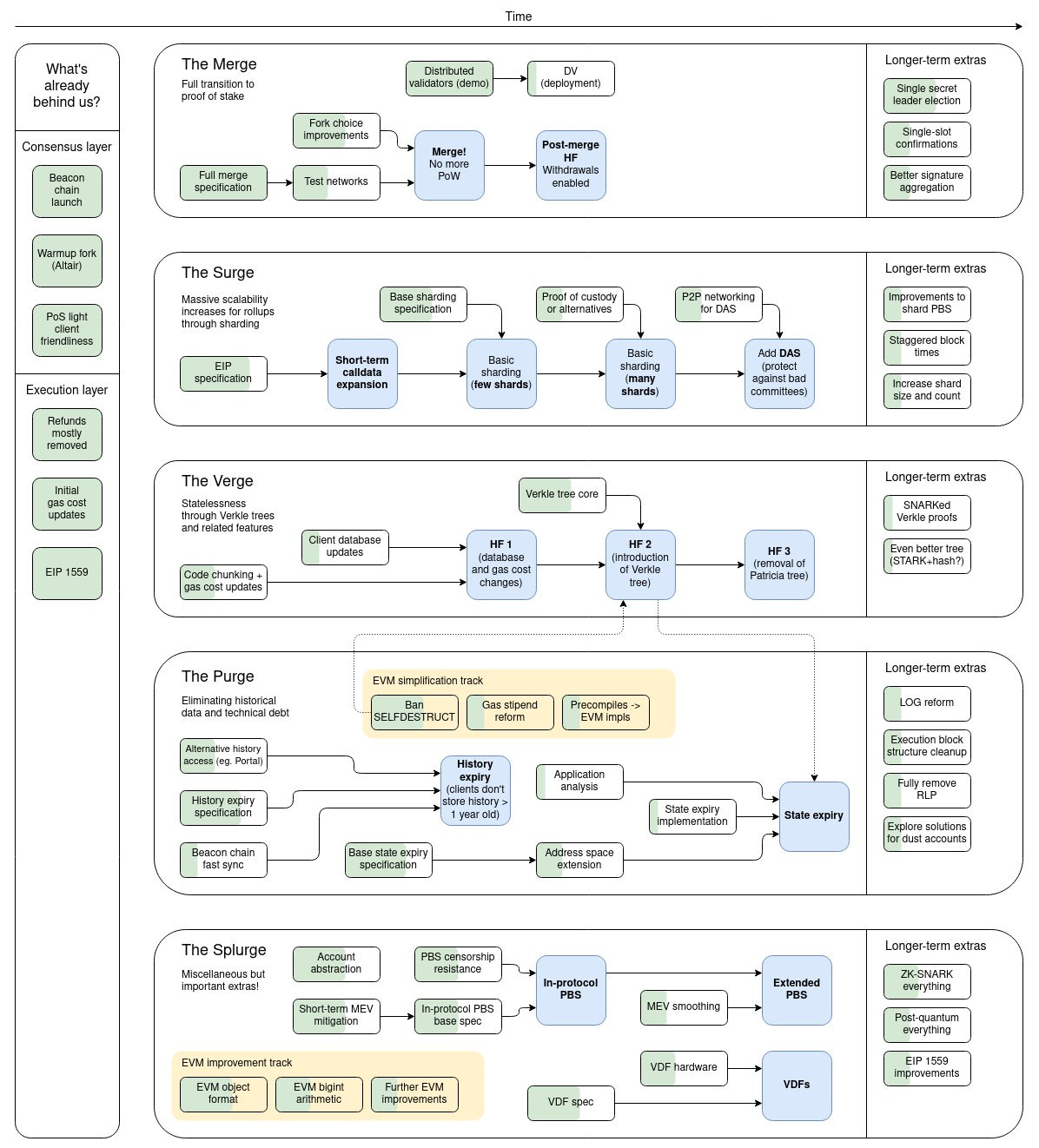Dear readers,
In the final issue of the ETH Merge series, we’re going to look at the rest of what Vitalik and the Ethereum team have lined up to complete the final form of what Ethereum is truly supposed to be.
Way back in the year, when talk was just bubbling up about the Ethereum Merge, I came across a podcast episode by the Bankless team with Vitalik Buterin, where he outlines the road map for Ethereum in the coming future.
Spoiler: the podcast is chockful of information. I suggest you listen to it when you’re in the mood to focus and learn,
According to Vitalik, here are the upcoming phases after The Merge:
The Surge
Basically the sharding aspect we touched on two issues previously. This is about preparing Ethereum for better scalability.
The Verge
The key element in this phase is the implementation of the Verkle Tree, stemming from a Merkle Tree. These are technical terms, which I don’t understand 100% either. However, here is my brief understanding of both, which may hopefully help you too.
Merkle Tree
This is a form of data structure to store information on the blockchain. This is how it works on a most basic level.
Imagine there are 4 transactions: txn A, B, C, D. Before being into the block, the data for each transaction is compressed first , known as hashing. Pairs are then formed, such as txn A+B and txns C+D. Each pair undergoes another layer of hashing, then both pairs are combined together and compressed once more, so you get txns ABCD. This is the Merkle Root, also known as the root hash.
The Merkle Tree sums up all the transactions in a block so users can check whether a transaction is included or not. Validating hashes is a fancy way of saying “checking whether or not the information in a transaction is correct”.
The picture that came to my mind as I’m writing this is of a puff pastry. Layers upon layers of dough are stacked and pounded until you get the puffiness of the pastry.
Verkle Tree
This is the improved version of the Merkle Tree. The difference is in how the data is compressed and how the validation occurs.
Basically, the Verkle tree requires less information to prove something is secure, which greatly enhances the amount of space available. This brings about more efficiency in the usage of space.
The Purge
As the name suggests, it’s about getting rid of stuff. In this case, it’s about better archiving of historical data. As the blockchain grows, it will require more and more space to store transactions and keep it running at the same time.
In this phase, the team will implement measures to reduce the amount of space needed to store the network. Historical transactions will be stored elsewhere instead of the validators’ computers. This will make it easier to run the blockchain.
The Splurge
Nothing definite is listed here and that’s intentional because this can be a kind of clean-up phase. After all the previous implementations have been put in place, minor changes will be made to smooth things down. The name suggests that devs can have a bit more free rein to do some fun things on the network.
If you’re interested to dig in a bit into the whole process, here is a diagram that gives an overview of the entire process.

Conclusion
The Ethereum network is far from being completed as you can see. While there are lots of work ahead, the team also needs to maintain the health of the network since it’s now become one of the core networks for the crypto universe. So much stuff is (and continues to be) built on it with more new ones popping up every day.
The robustness of the network is of utmost importance at any given moment, whether now or in the future. These upcoming changes will further ensure that Ethereum remains the no. 1 network in crypto in terms of usage.
Here are some links if you’d like to know more:
https://www.blockchain-council.org/blockchain/what-is-a-merkle-tree/
https://blog.cctip.io/what-are-verkle-trees-and-how-do-they-differ-from-merkle-trees/
As always, please feel free to share this with others who might have an interest in this topic.
Looking forward to your comments and ideas for future issues.



